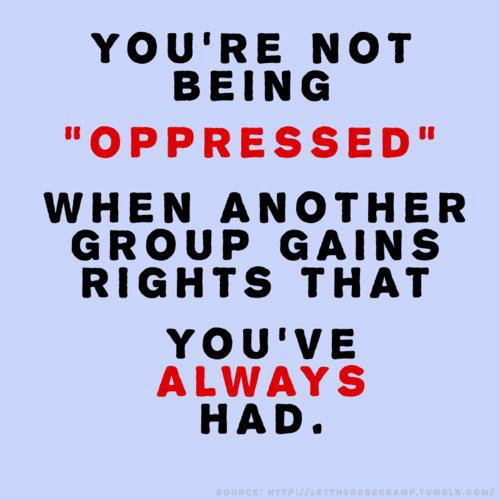Philosophies Of Punishment
Demands for the punishment of wrongdoers have been in the news and in my social media newsfeeds quite a bit recently. With that in mind, I thought it might be helpful if people gave some thought to what “punishment” means, and what we hope to accomplish by it. The following summary is from Punishment: A Comparative Historical Perspective, by Terance Miethe and Hong Lu.
Philosophies Of Punishment
Punishment serves numerous social-control functions, but it is usually justified on the principles of retribution, incapacitation, deterrence, rehabilitation, and/or restoration. The specific principles that underlie these dominant philosophies for punishment are summarized below.
Retribution
One of the oldest and most basic justifications for punishment involves the principles of revenge and retribution. This equation of punishment with the gravity of the offense is embedded in the Judeo–Christian tradition in the Mosaic laws of the Old Testament that emphasize the idea of “an eye for an eye.” Neither constrained by questions of offender culpability nor directed at preventing future wrongdoing, offenders under a retributive philosophy simply get what they deserve. Punishment is justified on its own grounds, a general principle that has remained popular throughout Western history in both law and widespread public beliefs about how justice should be dispensed in democratic societies.
The classical retributive principle of “let the punishment fit the crime” was the primary basis for criminal sentencing practices in much of Western Europe in the nineteenth century. This principle of punishment was subsequently modified in neoclassical thought to recognize that some offenders who commit similar offenses may be less blameworthy or culpable due to factors outside of their control (e.g., diminished capacity, mental disease or defect, immaturity). Under this revised retributive theory of just deserts, punishment should fit primarily the moral gravity of the crime and, to a lesser extent, the characteristics of the offender.
A current example of retributive principles being used as the basis for punishment involves mandatory sentencing policies and sentencing guidelines systems in the United States. Mandatory sentences dictate uniform sanctions for persons who commit particular types of offenses (e.g., enhanced penalties for crimes committed with firearms), whereas determinate sentencing guidelines prescribe specific punishments based on the severity of the criminal offense and the extensiveness of the offender’s prior criminal record. Consistent with a retributive philosophy, punishment under these sentencing systems focuses primarily on the seriousness and characteristics of the criminal act rather than the offender.
Although retribution is often linked to criminal sanctions, it is equally applicable to other types of legal sanctions and informal sanctions. For example, civil litigation that is based on the principle of strict liability is similar to retributive philosophy in that compensatory and punitive damages focus on the gravity of the prohibited act rather than characteristics of the offender. Lethal and nonlethal sanctions that derive from blood feuds between rival families, range wars in agrarian communities, terrorist attacks on civilian and government targets, and acts of “street justice” by vigilante groups and other extrajudicial bodies are often fueled by the twin motives of revenge and retribution. Various economic punishments and sanctions that restrict business practices (e.g., asset forfeitures, injunctions, product boycotts, worker strikes and slowdowns, revocation of licenses, decertification of programs, cease-and-desist orders, denial of benefits) may be justified on various utilitarian grounds like protecting society or deterring wrongdoing, but they may ultimately reflect the widespread belief in letting the punishment fit the crime.
Retribution as a penal philosophy has been criticized on several fronts when it is actually applied in practice. First, strict retributive sanctions based solely on the nature of the offense (e.g., mandatory sentences for drug trafficking, the use of firearms in the commission of crimes) are often criticized as being overly rigid, especially in societies that recognize degrees of individual culpability and blameworthiness. Second, the principle of lex talionis (i.e., the “eye for an eye” dictum that punishment should correspond in degree and kind to the offense) has limited applicability. For example, how do you sanction in kind acts of drunkenness, drug abuse, adultery, prostitution, and/or traffic violations like speeding? Third, the assumption of proportionality of punishments (i.e., that punishment should be commensurate or proportional to the moral gravity of the offense) is untenable in most pluralistic societies because there is often widespread public disagreement on the severity of particular offenses. Under these conditions, a retributive sentencing system that espouses proportional sanctions would be based on the erroneous assumption that there is public consensus in the rankings of the moral gravity of particular types of crime.
Even with these criticisms, however, the retributive principle of lex talionis and proportionality of sanctions remains a dominant justification of punishment in most Western cultures. Retribution under a Judeo–Christian religious tradition offers a divine justification for strict sanctions and it clearly fits popular notions of justice (e.g., “he got what was coming to him”). The dictum of “let the punishment fit the crime” also has some appeal as a principled, proportional, and commensurate form of societal revenge for various types of misconduct.
Incapacitation
A primary utilitarian purpose for punishment involves various actions designed to decrease the physical capacity of a person to commit criminal or deviant acts. This principle of incapacitation focuses on the elimination of individuals’ opportunity for crime and deviance through different types of physical restraints on their actions. The conditions of confinement may be so deplorable that they reduce the offender’s subsequent desire to engage in misconduct, but such a deterrent effect is not a necessary component of incapacitation in its pure and earliest form. In other words, a night in the “drunk tank,” confinement in the military stockade, or the “grounding” of a wayward adolescent are often considered useful incapacitative strategies even when these practices do not lead to subsequent reform in one’s behavior.
A plethora of devices, techniques, and structures have been used throughout history as means for incapacitation. The early tribal practices of banishment to the wilderness, the English system of “transportation” of convicts to other colonies in the seventeenth and eighteenth centuries, the exile of citizens in ancient Greek society, and political exile in more modern times are examples of incapacitative sanctions because they involve the physical removal of persons from their former communities, thereby restricting their physical opportunity for misconduct in the original setting. The stocks and pillory in English history and Colonial America were devices used for both public ridicule and incapacitation. Other types of incapacitating hardware are as diverse as electronic shackles for monitoring offenders in open spaces, Breathalysers that prevent drunk drivers from starting their cars, “kiddie harnesses” to restrict the movement of young children in public places, and chastity belts for limiting sexual promiscuity.
The function of incapacitation may also be served by other types of legal and extralegal restrictions on one’s behavior. Other legal forms of incapacitation involving civil or administrative decrees include court-ordered injunctions, federal boycotts and restraint-of-trade agreements, restraining orders in domestic violence cases, cease-and-desist orders, revocations of licenses, foreclosures, and the passage of certification requirements to perform particular tasks (e.g., college degree requirements for teaching, passing medical board and bar exams for practicing medicine or law). Many of these actions are economic sanctions in that they carry financial consequences for those involved, but these civil and administrative rules can also be seen as incapacitative in that they place physical restrictions on one’s possible actions. Ostracism, the spreading of adverse publicity, “lumping” (i.e., doing nothing and not responding to one’s inquiries), and censorship are some of the extralegal and informal means of physically restricting one’s behavioral opportunities.
The most widely known type of incapacitation involves some form of incarceration, or what others have termed “penal bondage.” Aside from their incapacitative effect on restricting immediate criminal opportunities, penal bondage of criminals, vagrants, debtors, social misfits, and other disadvantaged groups across time periods and geographical contexts has often included a component of forced labor (e.g., public works projects, forced servitude in military campaigns) as a condition of confinement.
Physical structures for incapacitation may have different purposes or functions besides the physical restraint of the body. These places of confinement are described across time and space in context-specific terms like dungeons, towers, workhouses, gulags, jails, prisons, labor camps, “readjustment” centers, correctional or treatment facilities, cottages, sanitariums, and mental institutions. The specific language used for descriptive purposes also signifies their functions beyond physical incapacitation.
During the last half century, several new forms of incapacitation have emerged. For example, shock incarceration programs involve short-term incarceration of juvenile offenders to show them the pains of imprisonment and scare them into a future life of conformity. Work release programs and placement in halfway houses are temporary incapacitation programs designed to maintain community ties and ease the adjustment from prison to conventional life. Another variant of incapacitation, intensive-supervision probation (ISP), leaves adjudicated criminals in their community but under the watchful eye of probation officers or other legal authorities.
The recent model of selective incapacitation in the United States is designed to target criminal offenders thought to have the greatest probability of repeat offending and place greater restraints on the nature and conditions of confinement for these “high-risk” offenders. Although research suggests that a small pool of people commits the predominant share of violent and property crime, efforts to successfully predict these high-risk offenders suffer from numerous ethical and practical problems, including high rates of both “false positives” (i.e., falsely labeling someone as a high-risk offender) and “false negatives” (i.e., releasing high-risk offenders because they were erroneously characterized as low-risk).
Contrary to early historical patterns of incapacitation that emphasized the reduction of the physical opportunity for crime and deviance, modern versions of this philosophy are more “forward-looking” in terms of focusing on the utility of punishments for changing offenders’ criminal motivations once they are no longer physically restrained from committing deviance. In this way, incapacitation is united with other utilitarian philosophies for punishment. Different types of incapacitative sanctions may serve as the initial framework for establishing successful programs of deterrence and rehabilitation.
Deterrence
The doctrine of deterrence asks a fundamental question about the relationship between sanctions and human behavior: Are legal and extralegal sanctions effective in reducing deviance and achieving conformity? Punishment is said to have a deterrent effect when the fear or actual imposition of punishment leads to conformity. The deterrent value of punishments is directly linked to the characteristics of those punishments. Specifically, punishments have the greatest potential for deterring misconduct when they are severe, certain, and swift in their application. Punishments are also widely assumed to be most effective for instrumental conduct (i.e., deliberate actions directed at the achievement of some explicit goal) and for potential offenders who have low commitment to deviance as a livelihood (e.g., the person is not a professional criminal).
Deterrence is based on a rational conception of human behavior in which individuals freely choose between alternative courses of action to maximize pleasure and minimize pain. From this classical perspective on crime and punishment, criminal solutions to problems become an unattractive option when the costs of this conduct exceed its expected benefit. Swift, certain, and severe sanctions are costs that are assumed to impede the likelihood of engaging in deviant behavior. From a deterrence standpoint, any type of punishment (e.g., monetary, informal, incapacitative, corporal) has a potential deterrent effect as long as it is perceived as a severe, certain, and swift sanction.
The research literature on the effectiveness of criminal punishments outlines the four major types of deterrence, which include the following:
- Specific deterrence involves the effectiveness of punishment on that particular individual’s future behavior. Recidivism rates (e.g., rates of repeat offending among prior offenders) are often used to measure the specific deterrent value of punishments.
- General deterrence asks whether the punishment of particular offenders deters other people from committing deviance. A comparison of crime rates over time or across jurisdictions is typically used to ascertain the general deterrent value of punishment.
- Marginal deterrence focuses on the relative effectiveness of different types of punishments as either general or specific deterrents. For example, if recidivism rates for drunk drivers are higher for those who receive monetary fines than those who received jail time, jail time would be rated higher in its marginal deterrent value as a specific deterrent for drunk driving. Similarly, debates about capital punishment often focus on the marginal deterrent value of life imprisonment compared to the death penalty as a general deterrent for murder.
- Partial deterrence refers to situations in which the threat of sanction has some deterrent value even when the sanction threats do not lead to law-abiding behavior. For example, if a thief picked or “lifted” someone’s wallet rather than robbing them at gunpoint (because the thief was fearful of the more serious penalty for committing an armed robbery), the thief would be treated as a “successful” case of partial deterrence. Similarly, tougher fines for speeding passed in a jurisdiction would serve as a partial deterrent under these two conditions: (1) the average motorist under the new law exceeded the speed limit by 5 miles an hour and (2) the average motorist under the old law exceeded the speed limit by 10 miles an hour. The average motorist is still exceeding the speed limit but he or she nonetheless is driving slower.
When the philosophy of deterrence is used in the context of penal reform, it is often as a justification for increasing the severity of sanctions, particularly in Western developed countries. Legislative responses to terrorist attacks, drug trafficking, child abductions, and violent crimes on school property have been directed primarily at increasing the severity and/or duration of punishments (e.g., being a drug “kingpin” and participation in lethal terrorist attacks are now capital crimes under U.S. federal law). Although these greater punitive measures may serve to pacify widespread public demands to “get tough” on crime, the specific and general deterrent effect of such efforts is probably limited without attention to the other necessary conditions for effective deterrence (i.e., high certainty and high celerity of punishments).
Empirical efforts to assess the effectiveness of deterrence are limited by several basic factors. First, persons may abide by laws or desist in deviant behavior for a variety of reasons other than the looming threat or fear of legal sanctions. Some of these nondeterrence constraints on behavior include one’s moral/ethical principles, religious beliefs, physical inability to commit the deviant act, and lack of opportunity. Second, neither swift nor certain punishment exists in most legal systems in the contemporary world. The majority of criminal offenses are typically unknown to the legal authorities and, even among the known offenses, only a small proportion result in an arrest and conviction. The typical criminal penalty and civil suits are often imposed or resolved months, if not years, after the initial violation. Third, the severity of punishment actually received by offenders is often far less than mandated by law, due to the operation of such factors as plea bargaining, charge reductions, jury nullifications, executive clemency and pardons, and “good time” provisions. Under these conditions, it is unsurprising that the deterrent effect of criminal and civil sanctions has not been clearly demonstrated across a variety of contexts.
Rehabilitation
Although it may seem contradictory or at least somewhat odd to assert that we punish for the treatment and reform of offenders, this basic principle underlies the rehabilitation purpose of punishment. The ultimate goal of rehabilitation is to restore a convicted offender to a constructive place in society through some combination of treatment, education, and training. The salience of rehabilitation as a punishment philosophy is indicated by the contemporary jargon of “correctional facilities,” “reformatories,” and “therapeutic community” now used to describe jails, prisons, and other institutions of incapacitation.
The link between places of incapacitation and reform is established throughout much of written history. The earliest forms of penal confinement in dungeons, towers, caves, and other dark and dreary places were largely incapacitative in their primary function, but some degree of moral and spiritual enlightenment was expected of those condemned to long periods of solitary confinement. This idea of restraint to reform is evident within the context of religious penance in Judeo–Christian practices in Western Europe and the British colonies in North America and elsewhere. It is also manifested in U.S. history in the early development of reformatories and penitentiaries. These large-scale incarceration structures punished misguided youth and criminals by isolating them so they could reflect on their deviant actions, repent, and subsequently reform their behavior. Confinement and reflection for spiritual reform are also of central importance in the religious principles found in Hinduism and Buddhism.
In contrast to retribution that emphasizes uniform punishments based on the gravity of the misconduct, rehabilitation focuses on the particular characteristics of individual offenders that require treatment and intervention. This individualized treatment approach is logically consistent with indeterminate sentencing structures that give judges enormous discretion to tailor punishments for the greatest good to the individual offender and provide parole boards with equally high discretion to release or retain offenders for future treatment. Through the application of current theories of human behavior and the latest therapeutic techniques for behavioral modification, rehabilitation experienced growing acceptance in many countries throughout much of the twentieth century.
Even though “correctional” institutions continue to espouse the benefits of rehabilitation and specific treatment programs (e.g., drug treatment, anger management, job training), support for rehabilitation in the United States was dealt a major blow in the mid-1970s with publication of a report that concluded that rehabilitation efforts had no appreciable effect on recidivism. National fiscal restraints, declines in correctional budgets for program development, high public outcry for more severe and longer prison sentences, and a growing crime-control political ideology that focuses on suppression of criminal behavior rather than its early prevention are current conditions in Western societies that are largely antithetical to the ideas of treatment and rehabilitation.
Restoration
One of the most recent goals of punishment derives from the principles of restoration. As an alternative to other punishment philosophies (e.g., retribution, incapacitation, rehabilitation), restorative justice fundamentally challenges our way of thinking about crime and justice. The global victims’ rights movement is a relatively new phenomenon, but, the general roots of restorative justice can be traced back to the early legal systems of Western Europe, ancient Hebrew justice, and precolonial African societies.
Restorative justice literally involves the process of returning to their previous condition all parties involved in or affected by the original misconduct, including victims, offenders, the community, and even possibly the government. Under this punishment philosophy, the offender takes full responsibility for the wrongdoing and initiates restitution to the victim. The victim and offender are brought together to develop a mutually beneficial program that helps the victim in the recovery process and provides the offender a means of reducing their risks of re-offending.
The theory of reintegrative shaming developed by John Braithwaite is based on the principles of restorative justice. Offenders take personal responsibility for their actions and condemnation is focused on the deviant act, rather than the offender, and its impact on the victim and the community. Both the offender and the community need to be reintegrated as a result of the harm caused by the criminal behavior. Community mediation groups, neighborhood councils, local support groups, and victim–offender conferences are the primary means of achieving these restorative efforts.
The principles of restorative justice have been applied to the study of both criminal and civil sanctions. For example, the institutionalized practice of “written apology” and “letter of forgiveness” in the Japanese criminal justice system is designed to express remorse and make restitution. By accepting the apology, the victim forgives the offender. In all cases of restorative justice, the goal is to restore both the individual parties and their community’s sense of wholeness.
(Miethe, T. D., & Lu, H. (2005). Punishment: a comparative historical perspective. Cambridge, UK: Cambridge University Press.)
![[x]](/images/sigil_md.jpg) Blackmoor Vituperative
Blackmoor Vituperative



